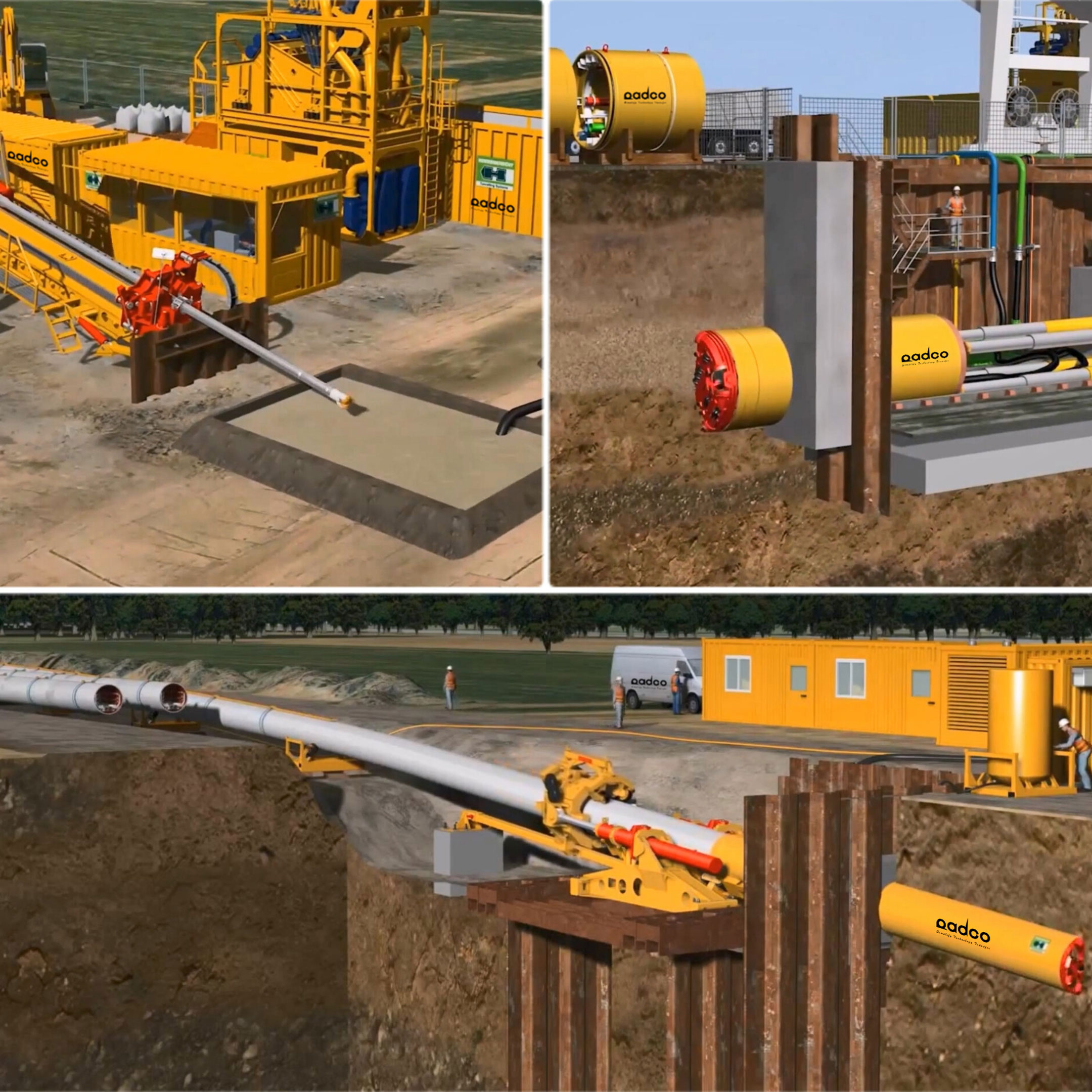Méthodes d’installation sans tranchée

Dessalement, solutions côtières et machines AVN : Améliorer la durabilité de l’eau

Reinventing Pipeline Installation: The Direct Pipe Revolution

Trenchless mechanized tunneling technology impacts the environment and existing infrastructure less than methods applying open-cut trenching. Pipelines that are laid underground are better protected against damage and therefore have a longer life expectancy than that laid aboveground. For the installation of sea outfalls and intakes, Horizontal Directional Drilling (HDD), Direct Pipe®, pipe jacking (Microtunneling), and segment lining technology may be used, depending on the site and ground conditions, pipe diameter and length of the pipe string to be installed. However, feasibility, technology, and economic factors are important.
Trenchless and Open-Cut Trenching Methods
Often, sea outfalls or intakes can be installed with both trenchless and open-cut trenching methods.
The main benefits of trenchless tunneling technology compared to open-cut trenching are:
• Minimum impact on the environment:
- Minimum damage to the seabed (tidal flat, coral reefs, etc.)
- No deterioration of seawater quality
- Fewer emissions
• Minimum impact on existing infrastructure:
- Realization in densely built-up urban areas possible
- No disturbance of tourism
- No limitation on shipping traffic.
• Longer lifetime of the pipeline:
- Less risk of subsidence, higher seismic safety
- Better protection against storms, hurricanes, and the corresponding impacts
- Better protection against general environmental impacts, e.g., weather conditions such as low and high tide, currents, and sediment transport
- Protection of the pipeline, e.g., against damage by ships.
• Minimum efforts to reinstate the site following pipe installation
• Independent of weather conditions and waves during the construction phase
AVN Machines belong to the category of closed, full-face excavation machines with a hydraulic slurry circuit. The soil to be excavated is removed using a cutter head adapted to the respective geology. This makes it possible to use the machines in almost all geological conditions. Standard or mixed ground cutter heads are used in soft soils and mixed geologies, while a rock cutter head with disc cutters is used for tunneling in stable rock formations. A cone-shaped crusher inside the excavation chamber crumbles stones and other obstructions to a conveyable grain size while tunneling and advancing. Afterward, the material falls through openings similar to a strainer in front of the suction port and is removed through the slurry line and the suspension. The excavation diameter can be enlarged using an upsize kit and a modified cutter head. This means that the AVN Machine can be used to tunnel different diameters and for different types of pipes.
In particular, keeping the crusher cone clean and avoiding clogging is a special challenge in cohesive soils. Based upon years of practical project experience, Herrenknecht has developed a range of water nozzle options, which can cope with different geological requirements. Additional water can be injected to clean the system using high-pressure nozzles integrated into the cone crusher. These jets cut loam or clay in the excavation chamber avoiding clogging. The medium-pressure nozzles use the standard slurry ports. Changing the size of the nozzles can adapt the suspension pressure and optimize the material flow. A newly developed, optional camera system in the excavation chamber provides the operator with an additional tool to visually monitor wear and tear and verify the situation inside machines with a more than 1.2 meters diameter.

Trenchless Installation Methods
Water intakes are also installed, for example, to supply water to desalination or power plants. If rocky geology or high cliffs are located close to the plant, a tunnel off the coast is an ideal solution to supply the water.
Conventional pipe installation of sea outfalls requires the pipe to be prepared on the construction site. Then the pipe is pulled over the seabed into the right position, sunk, and anchored. In comparison, trenchless tunneling technology has significantly less impact on the environment and existing infrastructure. And the pipeline is better protected against damage and therefore has a longer lifetime.

